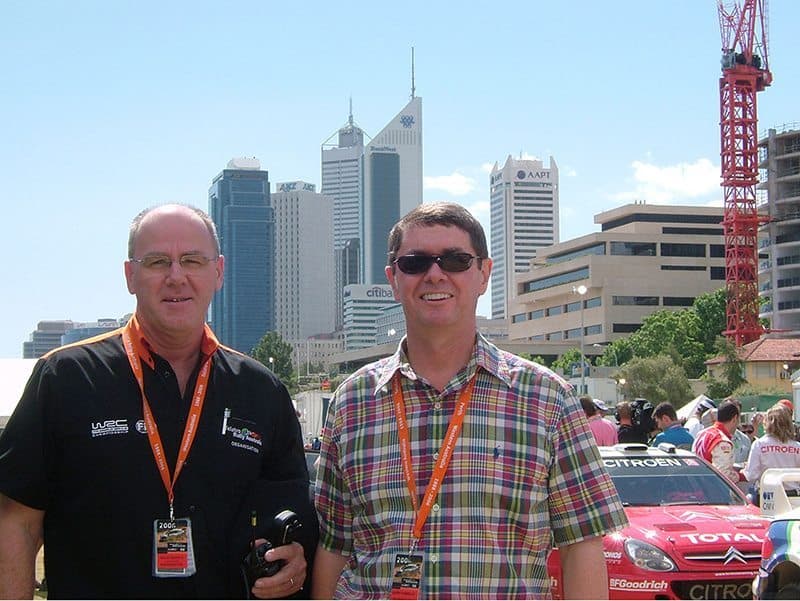
Rally Australia Clerks of Course Adrian Stafford and Garry Connelly in 2006. Photo: Martin Holmes
I have been involved in the FIA since 1989 after the first Rally Australia, when I was invited by the (then) President of the FIA Rally Commission to join that Commission. Later I also was appointed to the WRC Commission.Then, in 2004, I became the Deputy Delegate for Australia to the FIA. With the sad passing of John Large in April 2006 I was elected by the FIA General Assembly to join the FIA World Motor Sport Council, which is essentially the sporting board for the FIA. Over the years since, I have been elected or appointed to other FIA bodies such as the FIA Institute for Motor Sport Safety and its replacement, the Global Institute for Motor Sport Safety. Perhaps your biggest role at present is Chairman of Stewards for Formula 1. Does this involve going to every race in the F1 season? No, there are four permanent chairmen and we rotate because to do 20 or 21 events, plus all the preparatory meetings, debriefs etc., and other roles at the FIA, as a volunteer, would really be a full time job. How do you enjoy F1 after so many years involved in rallying and the WRC? I enjoy it immensely.
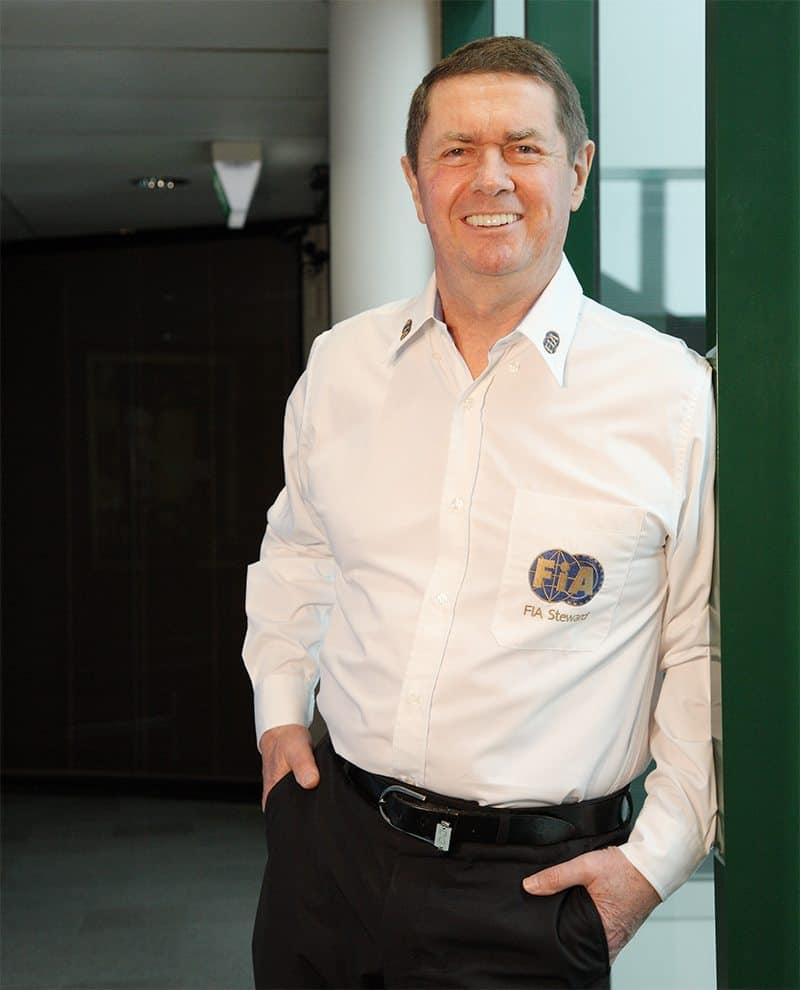
Garry Connelly is now an FIA Steward for the Formula 1 World Championship.
But the people in F1, including the drivers, are just as friendly and courteous as they are in rallying. Obviously at times there can be differences of opinion, and because the stakes are even higher sometimes in F1 than in rallying, things can get very tense, but at the end of the day, my view is that people in all disciplines of motor sport are good people who are passionate about their sport.Underneath that sometimes “remote” public persona, they are genuine, well intentioned people. Many would say working for the FIA is a nice little earner where you get flown around the world for free. Well - being a voluntary role, it certainly is not a “nice little earner” and it costs one a considerable amount financially each year to be involved, as there are some costs that you simply can’t claim back.
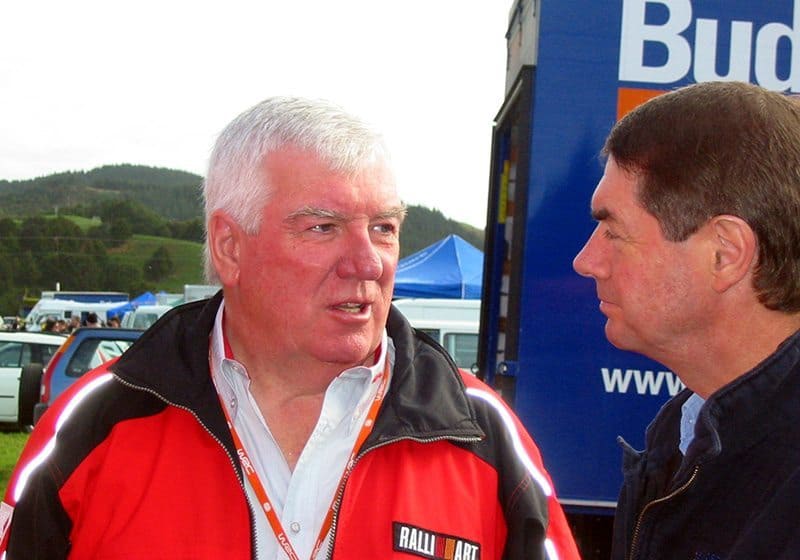
Connelly chats with Mitsubishi Ralliart boss Andrew Cowan at Rally New Zealand.
It was an incredible experience, to co-drive for my heroes – people like Barry Ferguson, Joghinder Singh and Kenjiro Shinozuka. It taught me a great deal about professionalism, and Barry Ferguson taught me so much about how to deal with people.
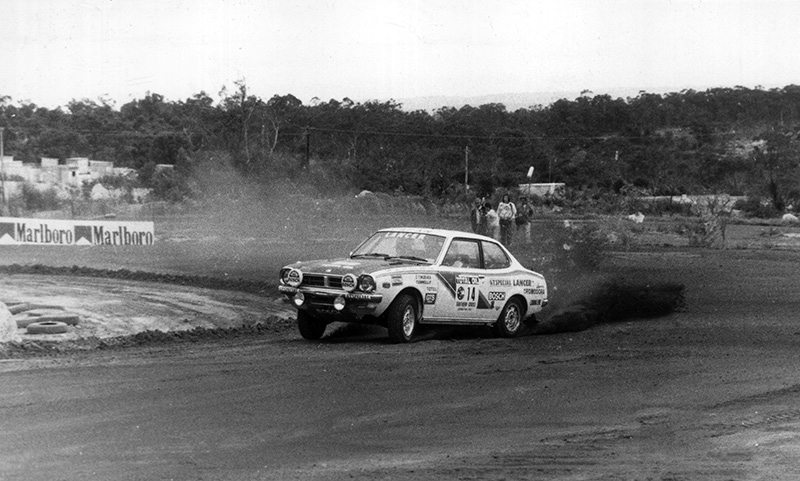
Garry Connelly co-driving for Kenjiro Shinozuka in the 1977 Southern Cross Rally.
We had to basically say “forget about the way we run rallies now – like it or not, if we are going to secure a WRC round for Australia, we are going to do it the FIA way, not the traditional Aussie way!”This caused a lot of dissent from officials and competitors, the best example being the change to A to A timing. I had so many people (some very senior in the sport, and in CAMS at the time as well) tell me: “You do it the traditional Aussie way and make the FIA understand that’s how it is”. Well, you can imagine how that would have worked! Did the FIA (or FISA, as it was back then) and the factory teams accept Australia from the outset? Unquestionably yes! And the reason for that was we said “Look – tell us what you want out of a WRC round – what are all the things that you would want us to do, so that when we demonstrate them to you at our 1988 candidate event, you will be unable to say ‘no’ to us coming into the WRC the next year, and not having to do the customary two year candidature”. Then we “reversed-engineered” everything the FISA (FIA) and the teams wanted and we delivered. So, it was virtually impossible, even considering the politics (which were significant), for them not to put us in for 1989.
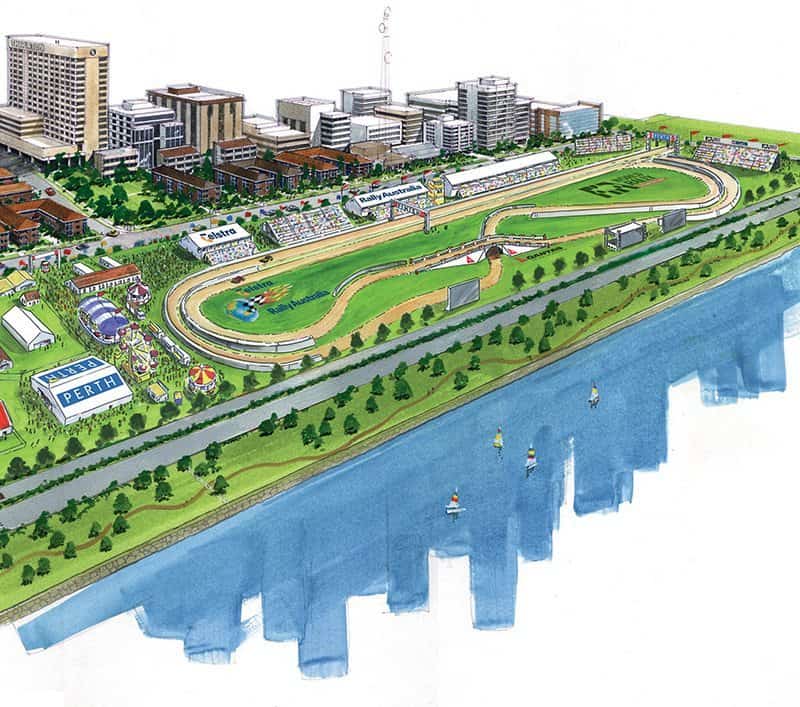
Langley Park revolutionised the World Rally Championship with a stage in the centre of Perth, Western Australia.
In the beginning we said “We have to take rallying to the people, because it is not as popular here as in Europe”. So even for our candidate event we had stages close to Perth city.Then our advertising agency (303 Advertising) came up with the idea of doing something right in the city – that resulted in the Northbridge stage around the restaurant district. But we realised that this was not sustainable. I recall I was in Adelaide for the Grand Prix with Shane Crockett (our CEO) and one morning I drew up this diagram of the Langley Park Super Special on the kitchen table of Mal Hemmerling’s home (Mal was the AGP CEO at the time, and also on the RA Board), showed it to Mal and Shane, who said “Okay, it’s crazy, but let’s do it!”. Thanks to Shane’s amazing ability to talk governments and authorities into just about anything, and the logistical skills of Rob Van Leeuwen (our Ops Manager), it happened – sure with a lot of effort, but it worked and it worked within budget.
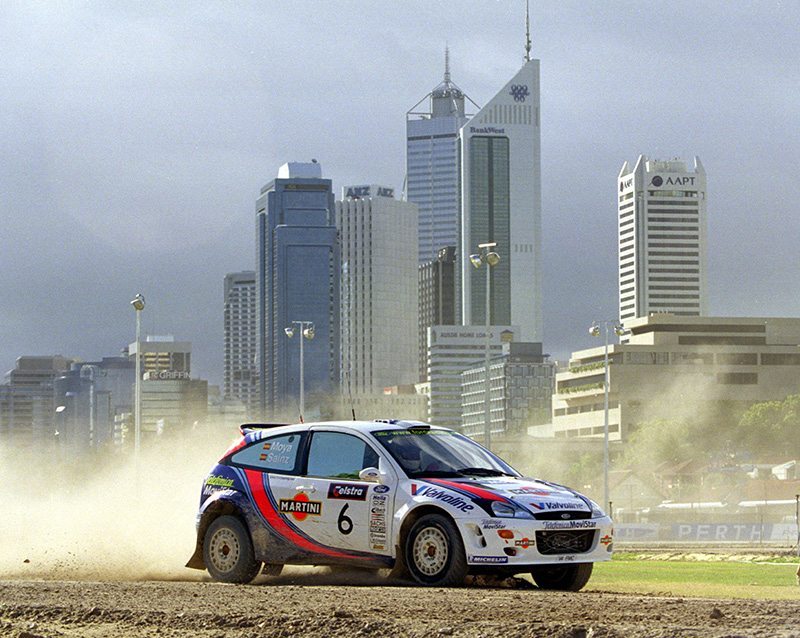
Ford's Carlos Sainz in action at Langley Park in 2000. Photo: Martin Holmes
It was a shame really, because the support we had from the various Premiers, to the Ministers and the heads of Tourism and EventsCorp in the years prior was outstanding.People like former Premiers Carmen Lawrence and Richard Court, and Ministers Graham Edwards and Norman Moore (from both sides of politics) were exceptional in their understanding of the benefits of the event to the state of WA, and their enthusiasm for it. Australia then lost the WRC for two years, eventually seeing it relocate to northern NSW in 2009. Was it a hard slog to get the event back to Australia, given the pressures of other countries wanting rounds? Very! It was touch and go and we really had to rely on our previous reputation, and a lot of favours called in, to achieve it.
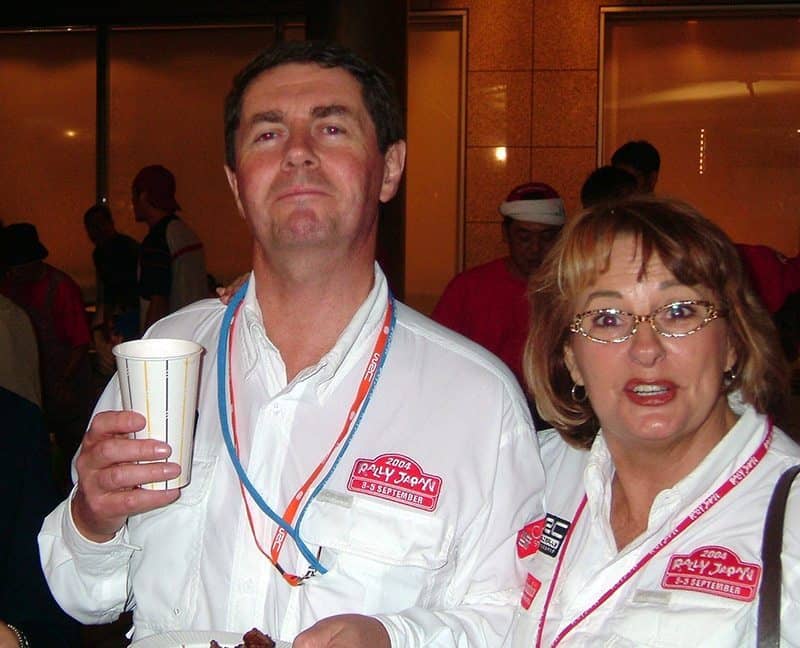
Garry and Monique Connelly at Rally Japan in 2004. Photo: Martin Holmes
The chance of seeing an event in both Australia and New Zealand is zero – despite how much both countries may deserve it.What’s next for Garry Connelly? Do you see yourself remaining in roles with the FIA, and could we see you back involved with the WRC, or even with Rally Australia? I would like to continue in my work at the FIA, but in relation to me being the FIA Delegate from Australia, it is up to CAMS to decide. In relation to my role on the World Motor Sport Council, I will be up for re-election this December by the FIA General Assembly, so that will depend on whether all the federations around the world (the “ASNs”) want me, and the F1 role is at the discretion of the FIA President. I don’t think a return to rallying in on the cards! Finally, how do you think Australian rallying and the ARC are tracking at the moment? Rally Australia is doing a great job and we need a WRC event here to act as the “locomotive” for rallying in this country. I must confess that I lost track of what was happening in the ARC for a few years there, but Molly Taylor’s success in 2016 really grabbed my attention. I do think the ARC needs some “re-vitalisation”, and I am sure the Australian Rally Commission working with the competitors can achieve that.
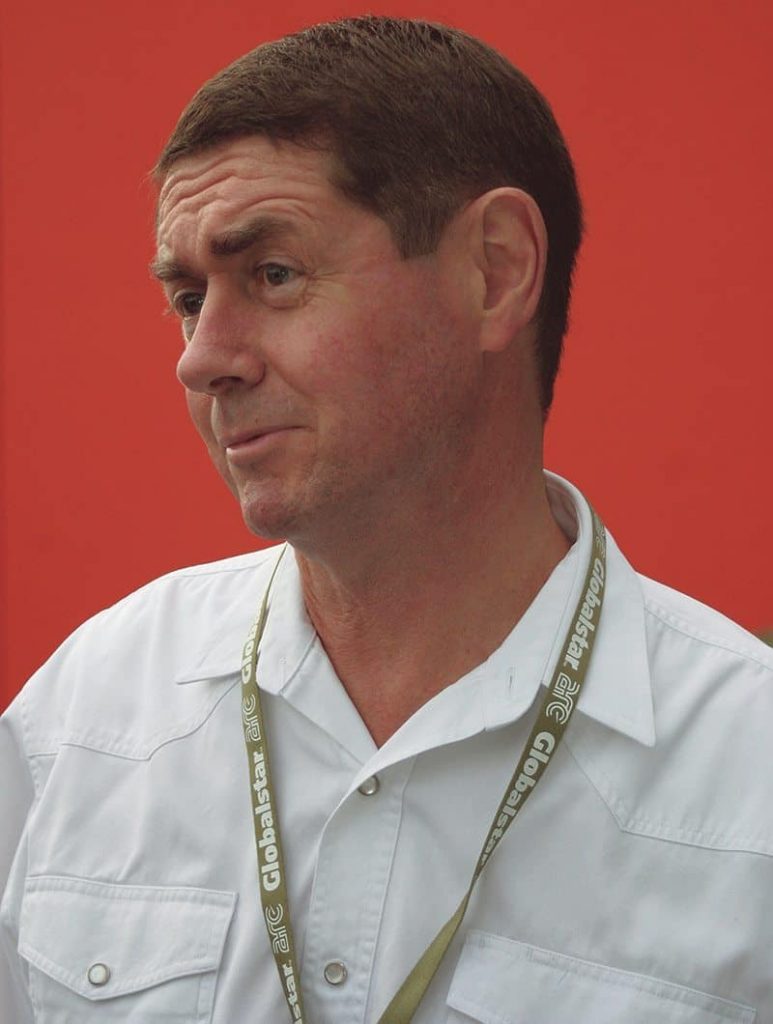
Connelly in his days with the Australian Rally Championship. Photo: Peter Whitten
Garry Connelly bio
Current positions:- Director of Australian Institute of Motor Sport Safety (AIMSS)
- Director of Australian Road Safety Foundation
- Member of the FIA World Motor Sport Council since 2006
- Deputy President of the Global Institute for Motor Sport Safety
- FIA Environmental Delegate (Ambassador)
- Member of the FIA Land Speed Record Commission, Statutes Review Commission and International Sporting Code Review Commission
- Chairmen of Stewards for Formula One
- CAMS’ FIA Delegate
- Observer at all CAMS board meetings
- Chairman of Rally Australia Organising Committee, 1988 - 2002
- Chairman of Rally Australia Organising Committee, 2008 – 2009



